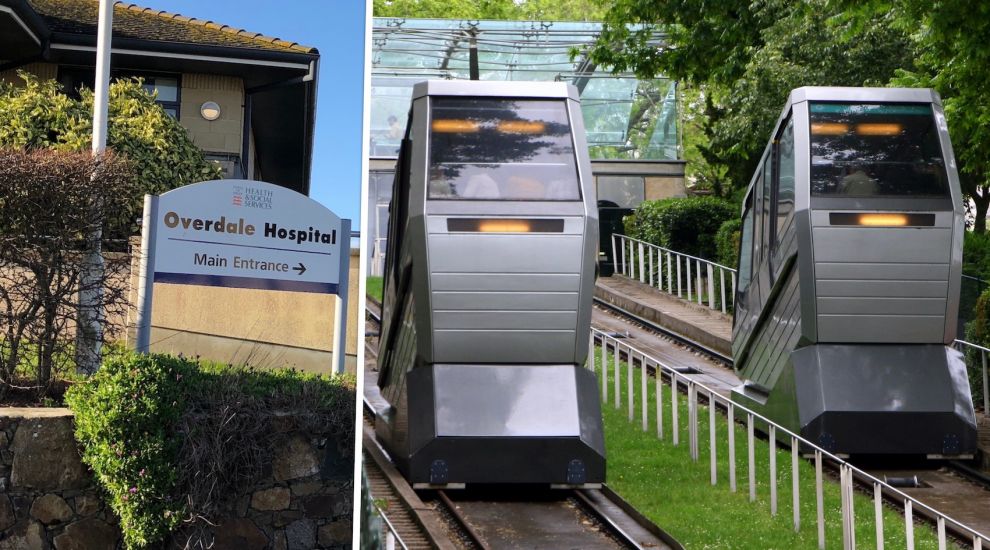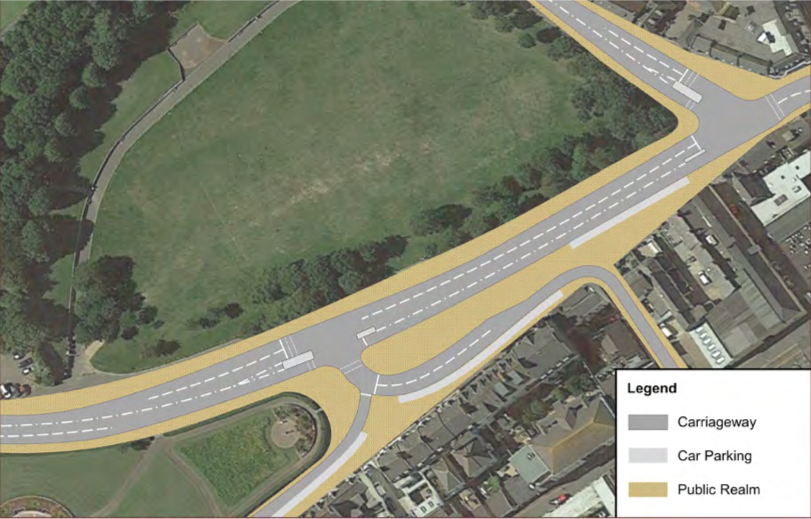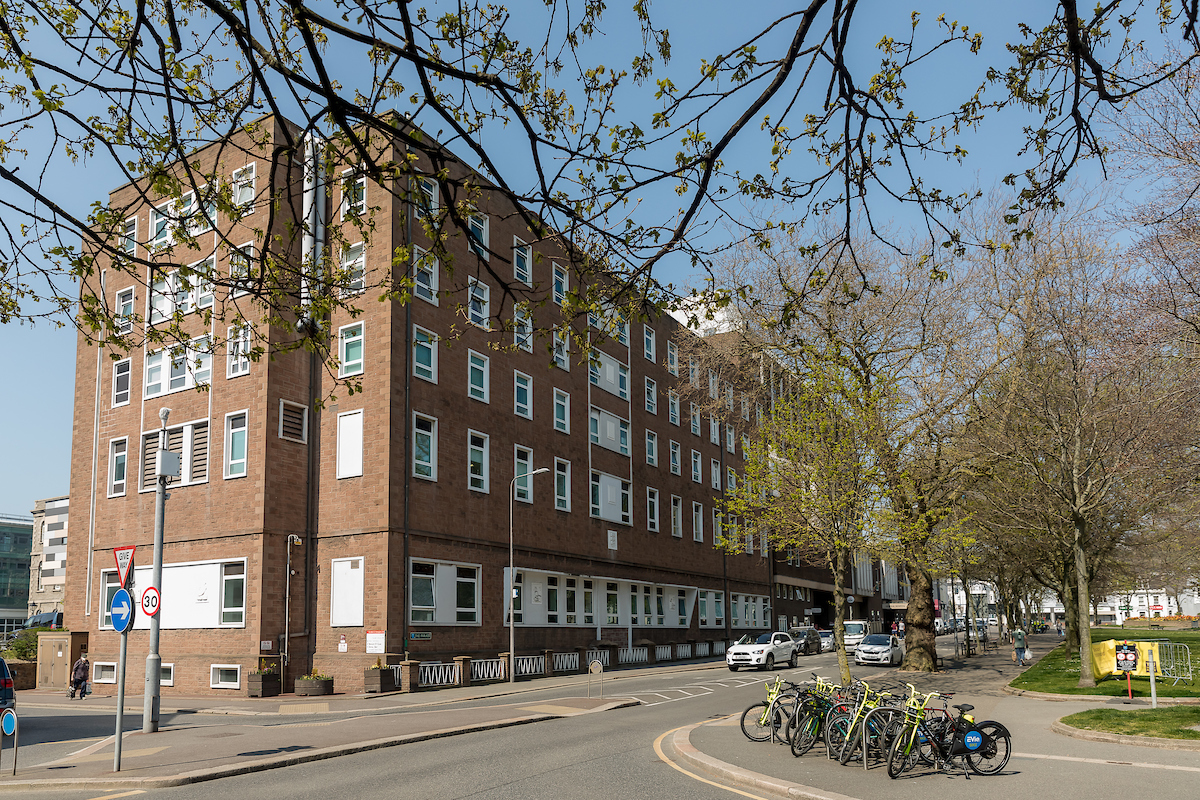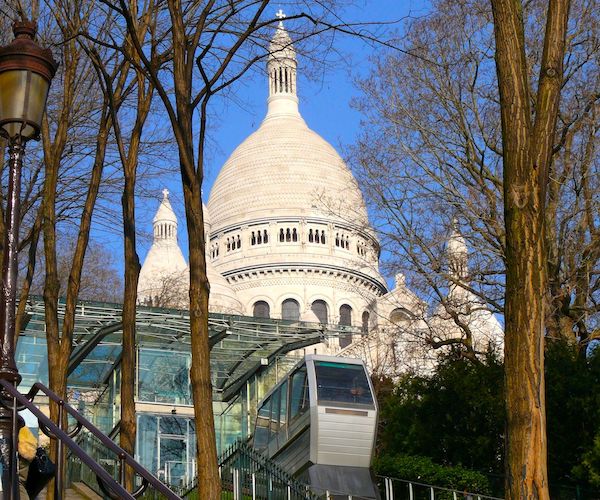


A trio of top local designers have suggested building a funicular to make the island's new hospital more accessible at Overdale, providing "a fun and sustainable" transport option as well as a potential tourist attraction.
Mike Waddington, Daniel Prichard and Antony Gibb all sit on the Jersey Architecture Commission, an advisory group that provides independent advice and guidance on major developments in Jersey.
“We all know Overdale is tricky from an access point of view,” Mr Waddington told Express.

Pictured: How the road might change around the People's Park to improve access to and from Overdale.
Access to Overdale have previously been identified as a problem in previous reports. It sits on top of an escarpment, flanked by woodland and accessed by narrow and winding roads.
The latest plan proposes “significant engineering works” to straighten, widen and lessen the gradient of Westmount Road to make it suitable for ambulances, buses and trucks. The route will also be made safer for walkers and cyclists.
It also envisages a high-frequency bus service from Liberation Station and a segregated cycle lane and adds that “options such as funicular railway, Norwegian cycle lifts etc should not be discounted at this stage."
The idea of a funicular is one that the trio of designers fully support, with Mr Prichard describing it as “a fun and sustainable way to reach the hilltop site chosen for Our Hospital”.
“Water and electric driven systems are well tried technologies, run for decades at Montmartre in Paris, several in Lisbon, Heidelberg, and Lynton in Devon,” he added.

Pictured: "It would be a pity if St. Helier lost its connection with the hospital," Mr Waddington said.
Mr Waddington said cable cars could help make sure St. Helier maintains its connectivity with the hospital, which he said was “really important."
“The current hospital is in the middle of town, it’s a little bit more of a walk to get to People’s Park and then from there up to Overdale,” he said.
“A lot of people go to the hospital for quick things such as blood tests, to get to the pharmacy, they only go in for about 15 to 20 minutes.
“Most people are thinking about ambulance access but there is a lot of day-to-day traffic as well. The hospital is quite a civic building, people have gotten used to having it in the middle of town and it would be a pity if St Helier lost its connection with the hospital.”
For Mr Waddington, a funicular would provide an “aspirational way of getting to the hospital”, which would be beneficial for all islanders especially young children going to Overdale to visit relatives, but also for tourists for whom it might become a real attraction.

Pictured: Funiculars have become tourist attractions like at the Sacré Coeur in Paris.
“With cafes and gardens up there, the sense of arrival would be something rather amazing,” he added. “Coming to the hospital could be a real delight.
“One of the interesting things is the hospital is likely to be more of a campus kind of site. It could interact with the landscape. You could go to the place to enjoy the landscape. The more connections we can make with the hospital in the slightly challenging position where it is the better. St Helier could hold onto the hospital.
“We have to do something anyway, if you do something rather wonderful you get additional benefits, rather than just doing something quite functional and utilitarian.”
A funicular link could also help reduce the new car park capacity at the top, especially if combined with parking at town level, under People’s Park, which would serve both St. Helier and the hospital, Mr Prichard suggested.
In the context of the Carbon Neutral objectives, Mr Waddington added that having a 600 to 800-space car park “does not really make sense. By contrast, a water-operated cable car system would provide “a very low energy kind of concept”.

Pictured: A funicular would provide "a fun and sustainable" way of accessing the site.
In addition, the project would fit in with other policies and objectives.
“I particularly like the idea that this concept chimes with Arup’s Public Realm and Movement Strategy for St. Helier and our Government Plan to ‘Put Children First’ as it would be a great way for children to visit elderly relatives in hospital with their mums and Dads,” Mr Waddington said.
“It would be fun, as David says, removing stress, being sustainable and offering wonderful changing views of the Island. It’s often difficult with children visiting hospitals.”
The architect said he would be having more discussions with the design team and that the idea of the funicular “might work its way in the conversation”
“We are planting a seed of how we can make the connection with St. Helier more enjoyable and more sustainable, we cannot dictate,” he said.
“The island has got to embrace the hospital. There is a desperate need for consultation for people’s views. In fact, I hope someone else will come up with an even better idea!”
Comments
Comments on this story express the views of the commentator only, not Bailiwick Publishing. We are unable to guarantee the accuracy of any of those comments.